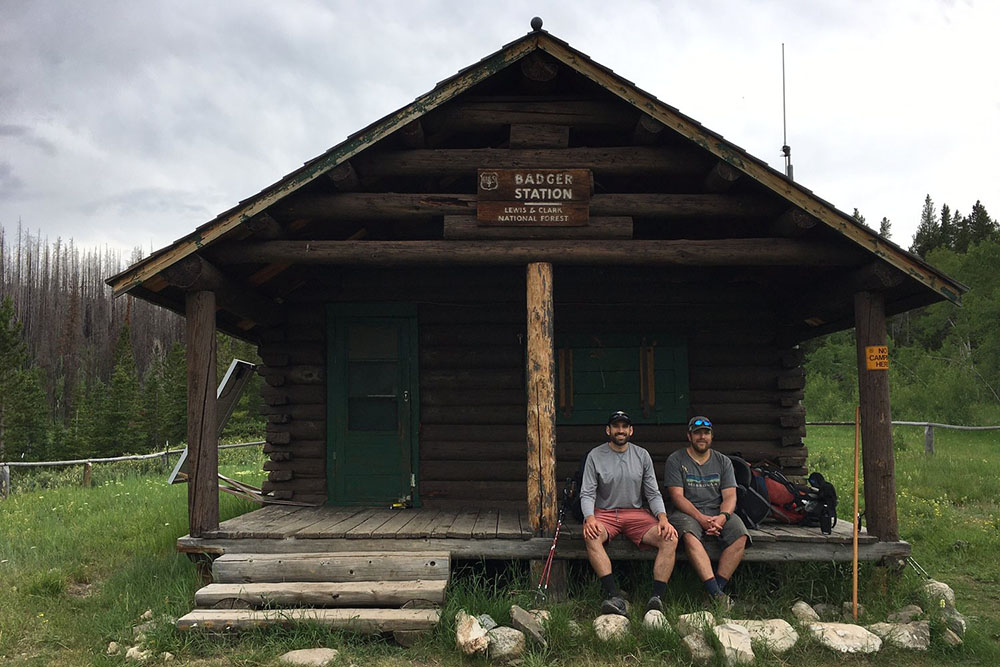
After six years, the revised forest plan for the Helena-Lewis and Clark National Forest is finally finished! The US Forest Service released its final record of decision, land management plan and Environmental Impact Statement on Friday, Oct. 29th. This new forest plan will guide the management of approximately 2.8 million acres of public lands, including the Badger-Two Medicine and Rocky Mountain Front for the next 20 – 25 years.
Since the plan revision process began in 2015, Glacier-Two Medicine Alliance has invested heavily in steering the new plan to ensure strong protections for wild lands and natural ecological processes, to safeguard sensitive wildlife species, and to provide non-motorized and non-mechanized recreation opportunities outside of recommended or designated Wilderness. We’ve also strongly supported Blackfeet-led efforts to strengthen Forest Service consultation requirements, respect for treaty rights, and put protections in place for cultural resources and uses.
And while we didn’t get everything we sought for in the plan, the final plan contains some pretty good direction, especially for the Badger-Two Medicine.
Before I provide a run down, I want to thank each of you who took the time to attend public meetings, provide testimony, submit written comments and objections, and generally stand up for the Badger-Two Medicine, wildlands, and wildlife throughout this plan revision process. Your participation was critical to the results we were able to achieve! On behalf of the Board of Glacier-Two Medicine Alliance, thank you for being a part of this process.
We’d also like to thank the staff of the Forest Service for their years of effort, their painstaking analyses and their public engagement efforts. We know it can be a thankless and difficult task to navigate different public perspectives as well as satisfy myriad law and policy requirements. While we may not agree on all aspects of your decision, we sincerely appreciate your work and look forward to working with you throughout the implementation process to ensure a healthy, wild future for these cherished public lands.
Now for the run down.
Badger-Two Medicine
The new forest plan contains a lot to celebrate for the Badger-Two Medicine. It thoroughly recognized the cultural significance of the landscape to the Blackfeet Nation as well as the outstanding wildland character of the area and its importance to non-tribal communities as well. For these reasons the Forest designated it a special emphasis area to be managed to protect its cultural and ecological values, as well as Blackfeet treaty rights and uses. Significantly, the plan includes enforceable directions for to improved consultation between the Blackfeet Tribe and the Forest Service in the management of the area as well as a clear role for the Tribe in shaping future decisions.
Continuing the good news, the plan includes clear commitments to protect natural ecological processes in the area as well as reinforces the existing travel management restrictions on year-round motorized use. The plan also declared the entire area as unsuitable for commercial timber production. And it identified nearly 60 miles of streams as eligible for inclusion as Wild and Scenic Rivers.
However, there were several places were the plan falls short. The Blackfeet Tribe, GTMA and others sought unsuccessfully to secure a determination that mountain bikes are unsuitable in the Badger-Two Medicine. Such a determination would have helped amend the existing travel management plan – which allows bikes--to better align with Blackfeet cultural values for the area as well as better protect core grizzly bear habitat and wild land character. However, the Forest Service left the door open for the Tribe to resolve the issue in the future through government-to-government consultation.
Also disappointing was the Forest Service’s refusal to return an enforceable standard that was removed from the draft plan which would have prevented adverse effects from forest management activities to the Traditional Cultural District that overlays the Badger-Two Medicine. The Forest Service explained privately they worried the standard would constrain their discretion.
The Rest of the Forest
In a significant win for wild places, the Forest Service recommended seven areas totaling 153,000 acres be designated as Wilderness. This is an increase of 119,000 acres from the existing plans for the Helena and Lewis and Clark National Forests respectively! Importantly, the Forest Service committed to close any trails and routes currently open to motorized or mechanized travel in these areas within three years. The significance of this commitment cannot be overstated. Too often the Forest Service has permitted or turned a blind eye to motorized vehicles or mountain bikes in recommended wilderness. These non-conforming uses then get established and the area is subsequently determined to no longer be eligible for inclusion in the National Wilderness Preservation System.
Unfortunately, several well-deserving areas with high wilderness values failed to be recommended for Wilderness, including the Middle Fork Judiths Wilderness Study Area, Deep Creek/Tenderfoot in the Little Belts, and Camas Creek in the Big Belts. We had supported our partners at Wild Montana and the Sierra Club in advocating for their inclusion in part to protect their wilderness values and in part to provide secure habitat for grizzly bears expanding into the southeastern portion of the forest. The lack of secure habitat in these mountain ranges is a significant barrier to connecting grizzly bears in the Northern Continental Divide Ecosystem with grizzly bears in Greater Yellowstone, connectivity vital to the species long-term recovery and persistence.
In another blow to grizzly connectivity, the Forest Service refused to extend its existing food storage order to cover the entire forest. Making food and other attractants inaccessible to grizzly bears is vital to prevent conflicts between bears and humans. This common-sense order is necessary to educate forest users about recreating safely in potentially-occupied grizzly bear habitat and to prevent the death of grizzly bears returning to historic range. We are dismayed by the Forest’s decision not to extend this simple order forest-wide.
On a final positive yet wonky note, we were pleased the Forest Service agreed to clarify its rationale for allowing mountain bikes in certain roadless areas of the forest not recommended for wilderness, such as the Badger-Two Medicine. The Forest Service agreed with our objection that it had misinterpreted national direction on the matter as requiring the agency allow bikes in these areas, when in fact the agency had the discretion whether to allow bikes or not. While the language clarification didn’t change anything on the ground, it helped prevent a potentially harmful precedent that could have led to similar areas on national forests across the country being opened to mountain biking that otherwise would not have been.
The Forest Plan will take effect at the end of the month. Glacier-Two Medicine Alliance will continue to work with interested partners, including the Blackfeet Tribe, to monitor its implementation to ensure Forest Service management safeguards the cultural and ecological integrity of the Badger-Two Medicine region.
